6. Henry IV (Marco Bellocchio, 1984)
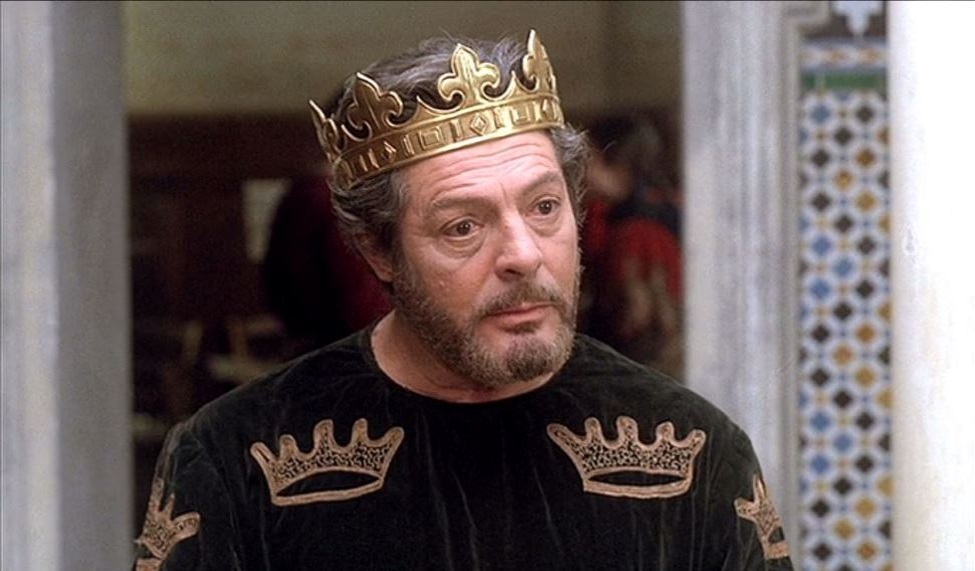
Adapted from a play by Luigi Pirandello, “Henry IV” is about a man of our times (Marcello Mastroianni) who, after falling from his horse during a costume party, believes he is the figure he was impersonating, the German emperor Henry IV. Thirty years later, a group of former friends embark on a visit to the man – who since the accident has been living in his family castle as a medieval monarch – in order to deliver him from his delusion.
Marco Bellocchio’s sober direction guides the viewer gently into the protagonist’s world; the depiction of the man’s delusion is never silly nor grotesque but, on the contrary, deeply humane and realistic. On the other hand, Bellocchio takes the viewer into the character’s mindset, with a seamless transition from contemporary to a period mise-en-scène. A good half of the film’s artistic success, however, weighs on the shoulders of Mastroianni, who handles with ease the frequent shifts from introspective to childish, from solemn to mundane, and shapes a character to which every element of the script – including a skillfully constructed plot twist from the play – adds complexity and empathy.
7. Navigator – A Medieval Odyssey (Vincent Ward, 1988)
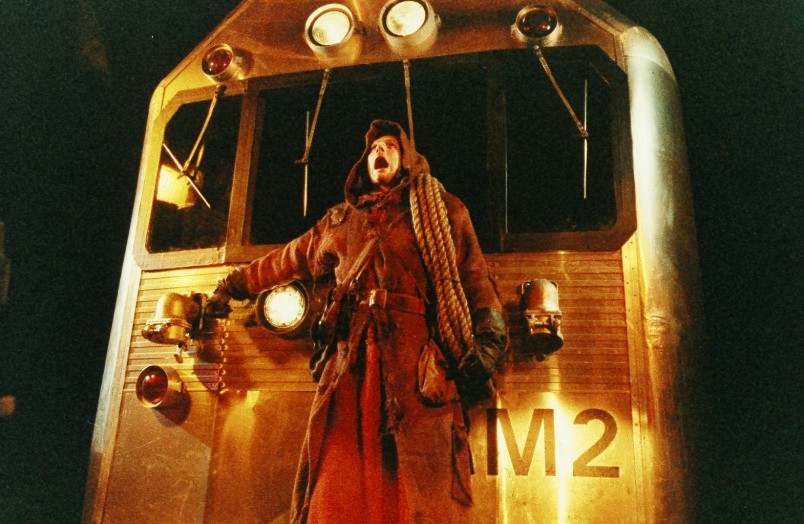
The film that launched the career of New Zealand director Vincent Ward marks one of the oddest approaches to the representation of the Middle Ages on screen. In the movie, a group of Scottish villagers in 1348 hopes for a miracle to save them from the Great Plague; a boy’s vision reveals a passage to another world, where there is a precious relic that will hopefully protect the village from the disease. Guided by the boy, the villagers enter this strange new world in search of the relic; they will never realize that the passage is actually a gateway through time, and that the world in which they emerge is actually a modern metropolis.
What is truly remarkable in “Navigator” is the consistent use of mystic overtones, by which the depiction of modern Auckland evokes a constant sense of dread and mystery; much to the characters’ awe, modern civilization appears like a hellish world of floating images and flashing lights, inhabited by mechanical monsters and nightmarish visions. Ward builds this haunting atmosphere by embracing the main characters’ point of view, with only a few inserts of irony that never indulge in convenient fish-out-of-water comedy. The use of different photographic templates for the two settings – black and white for medieval Scotland, a gritty color palette for modern Auckland – contributes to the movie’s straining and haunting fascination.
8. Army of Darkness (Sam Raimi, 1993)
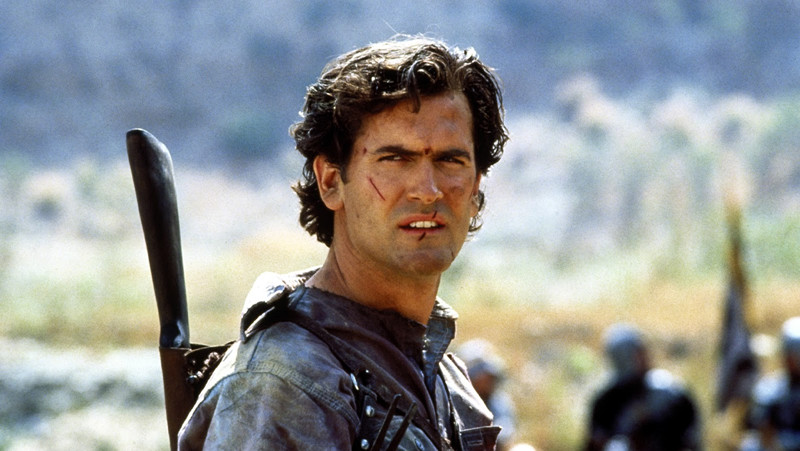
It might appear odd to include a sequel to one of the most influential horror films of the 1980s into a selection of films about medieval times; still, “Army of Darkness” combines a relentless B-movie vibe with a sincere homage to the Hollywood tradition of medieval films. The third installment in Sam Raimi’s Evil Dead trilogy marks a massive deviation in style for the franchise, as the protagonist Ashley Williams (Bruce Campbell) is cast across time by the Necronomicon, a cursed book able to raise the dead. Waking up in 14th century England, Ashley must find a way to stop an incoming invasion from the forces of evil, as well as to find a way home.
In the full spirit of Mark Twain’s “A Connecticut Yankee in King Arthur’s Court” (with a pinch of “The Wizard of Oz” thrown in the cauldron), Raimi embraces the consequences of a clash between ancient and modern times, both in technology, tone, and the characters’ behavior; the solemnity of the medieval characters’ speech and behavior is constantly counterpointed by Ash’s crude every-guy attitude, and the stark contrast between the two tones delivers some of the best scenes in the film. Raimi’s combination of swashbuckling, slapstick comedy and visual effects inspired by the Harryhausen era reaches a near-perfect amalgam in a both wild and epic final battle.
9. The Fisher King (Terry Gilliam, 1991)
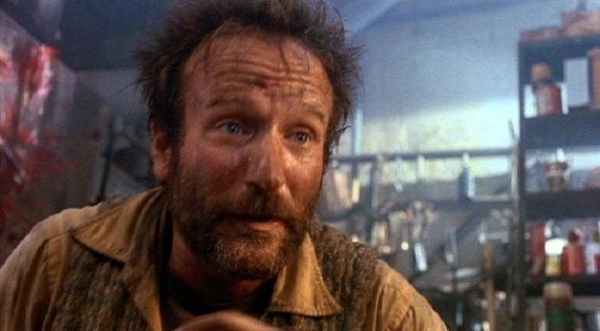
Inspired by the eponymous Arthurian tale, one of Terry Gilliam’s most notorious films is an audacious blend of comedy, urban melodrama, and fantasy. Three years after unwillingly inspiring a mass murderer with an unrestrained radio speech, former New York radio host Jack Lucas (Jeff Bridges) struggles to process his guilt. During a night errand, he is saved from an aggressor by a homeless man called Parry (Robin Williams); a former university teacher, Parry is obsessed with finding the Holy Grail, which he believes is actually kept in downtown Manhattan. After finding out that Parry’s wife was killed in the mass shooting, a guilt-ridden Jack decides to help the man rebuild his life and, ultimately, accomplish his quest for the Grail.
With a great insight for locations and cinematography, Gilliam manages to project Parry’s delusion onto the film’s realistic setting, at times giving to real New York places a true medieval feel. Driven by Williams’ energy and an inclination to tonal shifts and stylistic variations, the film depicts a joyous, dramatic, hallucinatory journey in New York’s underworld. The periodic apparition of the Red Knight – Parry’s quintessential hallucination – is a haunting metaphor for a world driven by chaos in which, sometimes, only an absurd quest for an ideal may give life meaning.
10. Hard to Be a God (Aleksey Y. German, 2013)
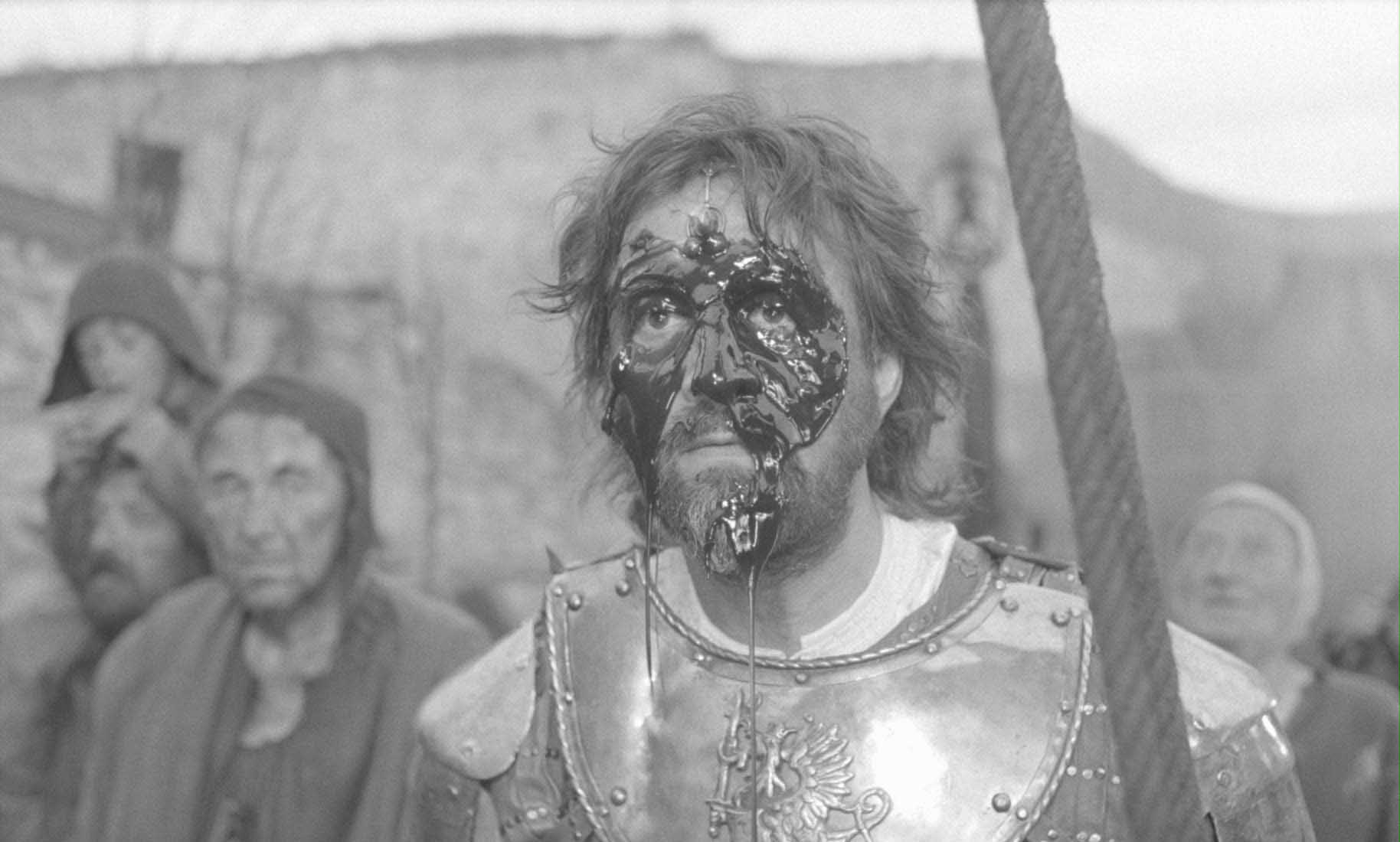
Adapted from a science fiction novel by the brothers Strugatsky, the last film by Russian director Aleksey Y. German is a gritty, cruel, and yet ironic take on the representation of the Middle Ages. Like in the novel, the film is centered about a scientist from Earth who, having been sent as an observer to an Earth-like planet in which mankind is stuck in medieval times, lives undercover as noble Don Rumata. Witnessing the annihilation of arts and sciences at the hands of authority, Rumata grows increasingly cynical, while the kingdom he lives in turns slowly into a fascist state. The tormented utopianism of the novel is absent from the film, in which the main character has apparently given up any hope of contributing to social progress before the plot even begins.
Shot in a baroque and claustrophobic black and white, the movie is a kaleidoscope of horrid visions. Under the voyeuristic gaze of an unnamed observer (possibly the film’s viewer), the world in which Rumata acts is an immense physical and moral gutter where violence, ignorance, and depravity pair up with the constant sight of mud, blood, and excrement. The humanoids living in the alien city of Arkanar appear obtuse beyond redemption, to the point of mirroring the ethical desolation of the human race which expects to educate them. Displaying an inescapable yet lucid pessimism and an outstanding example of technical bravura, “Hard to Be a God” is an indispensable filmic meditation on the “Dark Age” always hiding in the heart of mankind.